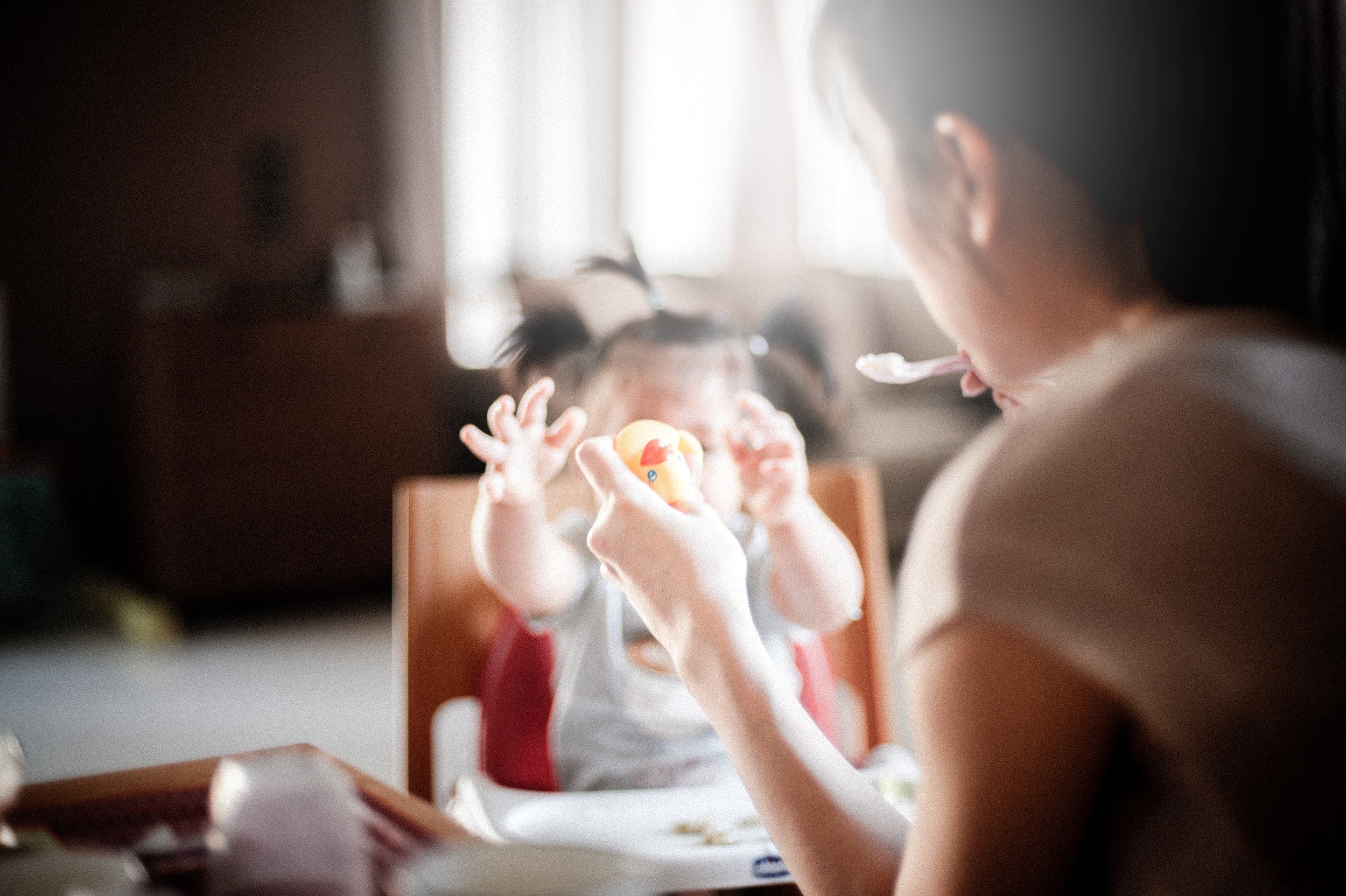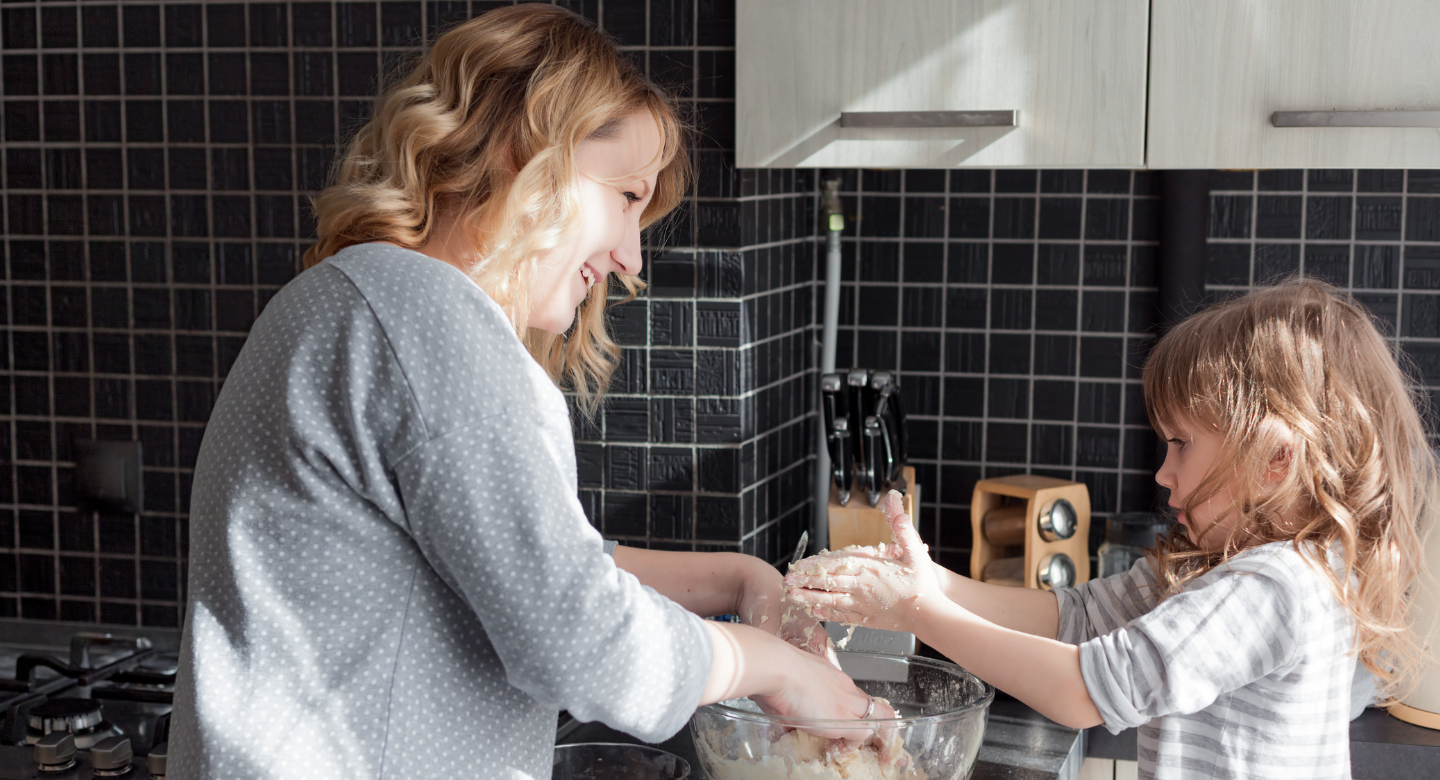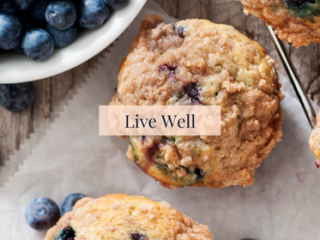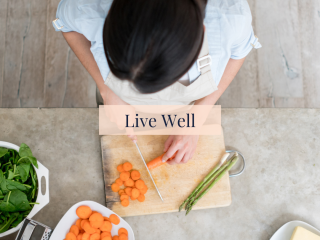Life used to be simple. Sushi and Sapporo. A quick steak on the BBQ with a side salad. Now, mealtime feels more like a food fight in the school lunchroom. Messy, chaotic and often ending in tears. Yours and theirs.
How do we end it? How do we stick to our own healthy eating goals without military-style parenting and old school clean-your-plate rules? How do we take the stress out of dinner time so we can enjoy this sacred evening ritual without worrying our littles will wither away on a diet of seemingly 98% white pasta?

We spent an hour grilling one of our favourite nutrition pros and mama of two, Jay Baum, RD.
We took questions from our #MamaReset squad. And, boy, did they have questions.
You too?
Here are all Jay’s top tips for raising healthy eaters and minimizing power struggles at the dinner table.
Let’s kick this off! when should we start thinking about our littles’ eating habits?
Jay: Healthy eating starts from infancy! It’s best to expose babies to as many foods & textures as possible. That doesn’t mean they’ll like them right away. You should expect to expose babies to a food multiple times before they will decide to take it and actually swallow it. Overall, focus on offering a variety of foods presented in different ways. Try cubes, slices, purees or shapes!
What are the most important foods for infants?
Jay: The most important nutrients to focus on are:
-
Protein. Eggs and red meat are good sources of protein, iron and zinc that babies need.
-
Healthy Fats. Cold water fish like salmon and trout, whole eggs, and hummus are good baby-friendly fat sources. If your little one is not at a high risk for allergies, nut butters are another good choice.
-
Note: children at high risk for food allergies include premature babies, those whose siblings have food allergies, &/or those with severe eczema, asthma, or demonstrated food intolerances.
-
-
Iron is important as baby’s iron needs jump from 1 mg to 11 mg per day around 6-7 months. Formula is fortified with iron but breastfed babies should get iron sources like red meat, poultry and legumes.
The latest research on allergens like peanuts, dairy, eggs, soy and shrimp has shown that EARLY, not delayed exposure is the best way to steer your baby’s system away from allergic reactions. Check out the newest guidelines here, which recommend introducing from 6 months of age.
One last tip: breastfed infants require Vitamin D supplementation. If you’re using formula, check whether it’s fortified with VD.

How much does my baby need to eat?
Jay: Healthy babies following a normal growth curve (size is proportionally increasing, even if they’re smaller than average) don’t need to be watched for quantity. Sometimes babies don’t take many solids until around a year of age!
Find a qualified dietitian and/or resources on baby-led weaning to ensure your baby’s nutrition needs are being fully met. And remember: the less pressure you put on your little one, the more likely they’ll go along with the new foods and routines!
Let’s talk about kid nutrition. how do we end mealtime stress?
Jay: I coach my clients to follow the Division of Responsibility when it comes to meal times.
Parents are only responsible for WHAT + WHEN. What is offered at each meal and when do those meals occur?
Children are only responsible for WHETHER + HOW MUCH. Whether they are hungry or choose to eat, and how much they are hungry for, or choose to eat.
When someone is doing the other’s job? That’s when problems start. For example, if you’re trying to encourage, or force, your child to eat more than they want, you’re acting outside of your responsibility zone. The child should always decide how much to eat. Or if your child is being allowed to dictate what they eat and you’re serving nuggets and grapes at every meal? They’re acting outside of their responsibilities.
Don’t ask kids questions they can’t answer, like “What do you want for dinner?” They’re not equipped with the nutrition knowledge or self-control you are, to choose, plan and prepare a healthy family meal. The parent decides when meals occur and what will be eaten. The child eats as much as they can/want. It really can be that simple.
Snacking 600 times per day: Is that normal?
Jay: Yes! Bedtime snacks & between meal snacks are healthful and normal for younger children. Even if your little one hasn’t had much of the chickpea salad you served at lunch or the salmon you’ve served for dinner, I recommend you still offer a snack. Of course, under the Division of Responsibility we talked about, YOU will choose what that snack is – so it can be a good opportunity to offer something your child needs. Maybe some more fruit or veggies, some yogurt, some cheese and crackers or something with a little bit of protein.
Treats are a bit different but they are still an important ritual and part of our cultural bonding: the birthday cake, the popsicle at the zoo, etc. Try to be matter-of-fact about treats, and don’t use them as bribes or rewards; a good relationship with food is best cultivated when special foods like dessert are not surrounded by conditions. If dessert is being served, everyone should get some, regardless of how much dinner they did or didn’t eat. For younger kids, put dessert right on the table at the same time as the rest of your food. If they choose to have only a few bites of meatloaf and then eat dessert, don’t panic. Often kids will want dessert first, but they will also often return to their savoury course once the sweets are done.
Try comforting your littles in distressing moments without food. Of course, being hangry can make anyone throw a tantrum, especially a toddler or preschooler. When you suspect a tantrum might be due to hunger, ask “Are you hungry?” and help them learn to feel into their body’s cues, rather than just shoving a snack at them in a hurry to end the fit.
What should we focus on as our kids get older?
Jay: As kids get more social and start visiting friends’ houses, they get exposed to more foods & parenting styles. You might hear the dreaded, “But Amy’s mom lets her…” and be asked for foods/food products you aren’t willing to purchase. On the flip side, your kiddos might try a new food because they see a friend enjoying it! Stay away from negotiation, even as your kids grow into their childhood and adolescence. Stick to the Division of Responsibilities.

Getting the kids involved in the kitchen is one of my top tips, and they can take on more and more tasks as they grow. Little kids can help add things to a salad or stir something! School-age children can start cutting, measuring and using some basic appliances. Get them involved and the chance they’ll eat the food is much higher! Let them come shopping with you, even if it slows you down, so they are exposed to the variety of fresh fruits and vegetables and can help choose some they love. Just don’t bother trying to teach them nutrition facts until they’re in adolescence, since little kids don’t have the abstract understanding they need to grasp concepts like macronutrients and vitamins.
Focus on being a great role model! By observing you planning, shopping, prepping and cooking some of your favourite family foods, your littles will learn so much.
OK, picky eaters are normal but when should we seek help?
Jay: All kids have tastes, just like adults. Everyone has foods they just won’t eat. Over time, tastes will change. Try to implement the Division of Responsibilities first and see if that helps take some of the stress away for both you and your little person.
If you find yourself in any of these situations, reach out to a qualified Registered Dietitian for help:
-
If you are making multiple meals for everyone;
-
If meals start taking over your mind and your time;
-
If you feel like you can’t eat in public;
-
If it is causing you anxiety or conflict with your kids;
-
If mealtime makes you feel bad or worried.
Where can we get more info?
Jay Baum, RD does private in-home visits in Toronto, and also offers online consulting and coaching to families. Find her at Pommetta.com.








Wait, don’t need to finish dinner before dessert?? My son would milk this!! Does that really work??